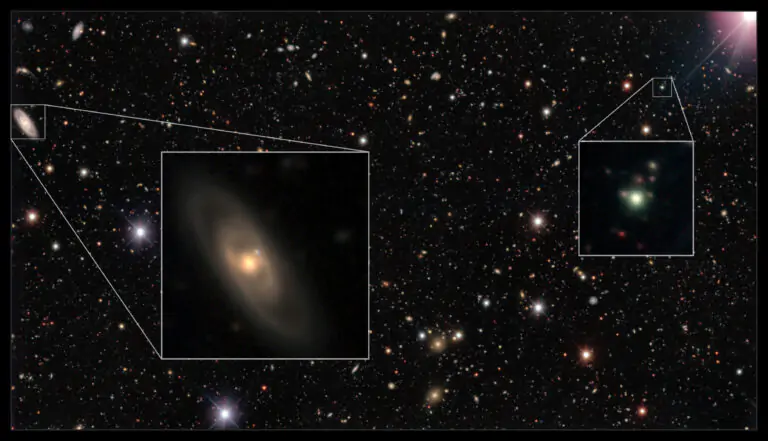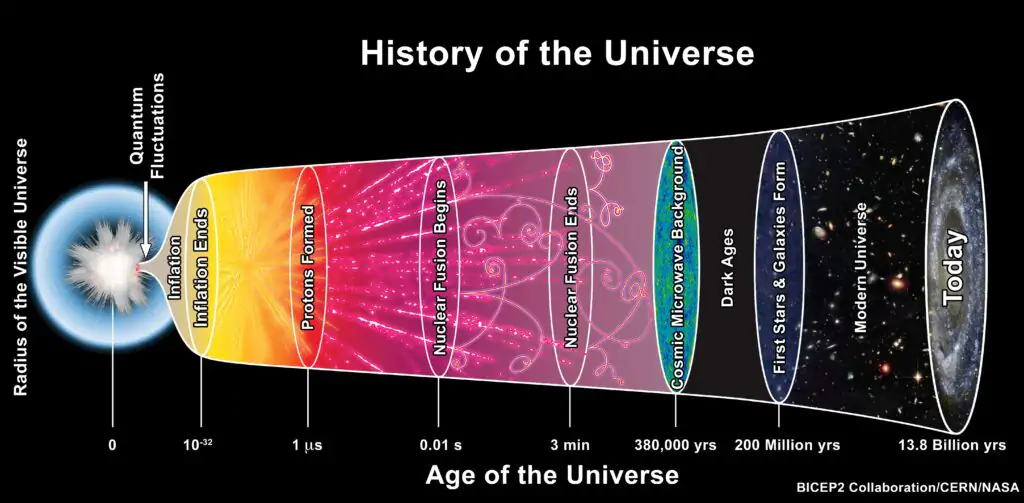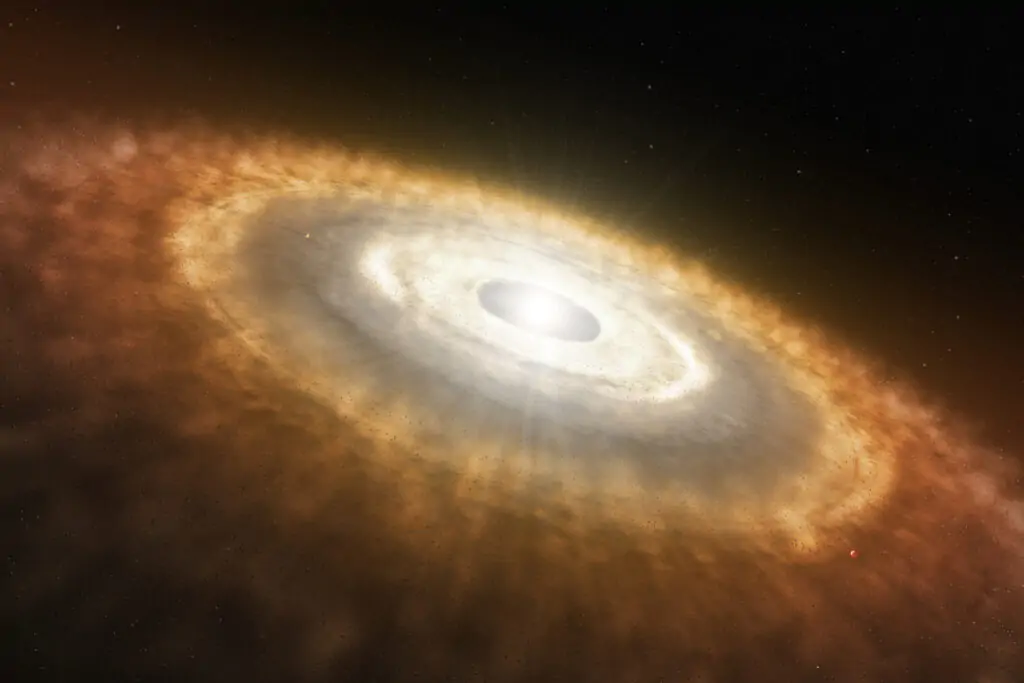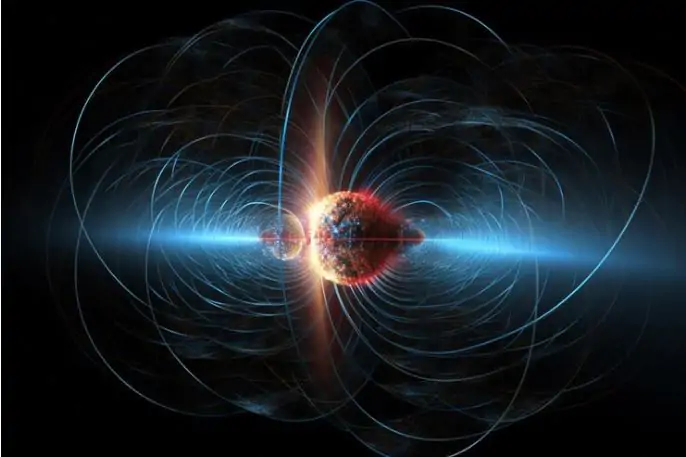Introduction
Astrophysics has significant trouble comprehending dark energy’s role in the universe’s accelerating expansion, which motivates further study and space missions aimed at learning more about this enigmatic factor.
The Big Bang, or sudden explosion of the cosmos, occurred 13.8 billion years ago. This brief first expansion of the cosmos was followed by gravity’s beginning to slow it down. But this couldn’t last forever in the universe. The cosmos began to expand faster nine billion years after it started, and scientists have termed this new force “dark energy.”
But what really defines dark energy?
The short reply is, we don’t know. But we know it exists; it is causing the cosmos to expand at an accelerated rate, and dark energy accounts for around 68.3 to 70% of the universe.
An Overview of the Past
The Beginning Was With Cepheids
Dark energy was discovered in the late 1990s. But its scientific origins date back to 1912, when American astronomer Henrietta Swan Leavitt made a significant discovery utilising Cepheid variables, a class of stars whose brightness moves with a regularity defined according to the star’s brightness.
The amount of light emitted by all Cepheid stars with a certain period—a Cepheid’s period is the span of time it takes for a star to become radiant, dull, and then bright again—is the same, or their brightness. Leavitt’s examinations of these stars revealed a relationship between their luminosity and their regular cycle of brightness. Thanks to Leavitt’s discoveries, astronomers can now calculate the separations between Earth and distant Cepheid stars (including our own Milky Way) by using the brightness and period of the star.
At about this same period in history, astronomer Vesto Slipher used the spectrograph on his telescope to study spiral galaxies. A spectrograph divides light into its constituent colours in a similar manner to how a prism divides light into rainbows. He observed the various light wavelengths originating from the galaxies in various spectral lines using the spectrograph, a relatively new innovation at the time. Through his observations, Silpher became the first astronomer to measure the redshift—the measure of how rapidly a galaxy is travelling away from us—in far-off galaxies. The identification of dark energy is just one of the numerous scientific discoveries that will depend on these measurements in the future.
As celestial objects travel farther from earth and their light broadens, this effect is commonly referred to as redshift. Red light has the longest spectrum and acts like a wave. As a result, light from things travelling away from us has a longer wavelength and extends to the electromagnetic “red end.”
Finding Evidence of an Expanding Universe
Astronomers eventually noticed that galaxies were moving away from us over time, which demonstrated how the universe was expanding. This was due in part to the discovery of galactic redshift, the period-luminosity relation of Cepheid variables, and a newfound ability to measure a star’s or galaxy’s distance. Several scientists from all across the world began piecing together the elements of an expanding cosmos in the years that followed.
In 1927, Belgian astronomer Georges Lemaître, who is said to have been unaware of Friedmann’s work, published a paper also factoring in Einstein’s theory of general relativity. And, while Einstein stated in his theory that the universe was static, Lemaître showed how the equations in Einstein’s theory actually support the idea that the universe is not static but, in fact, is actually expanding.
In 1929, astronomer Edwin Hubble used measurements made by his colleague, astronomer Milton Humason, to prove that the cosmos was expanding. The redshift of spiral galaxies was measured by Humason. Subsequently, Hubble and Humason examined Cepheid stars within those galaxies, employing the stars to ascertain the distance between their respective galaxies (also known as nebulae).
They contrasted the distances of these galaxies to their redshifts, discovering that the farther away a celestial body is, the bigger its redshift and the faster it moves away from earth. The two scientists discovered that celestial bodies, just like galaxies, move away from Earth faster as they get farther away, at speeds of up to hundreds of thousands of miles per second—a finding now known as Hubble’s Law, or the Hubble-Lemaître law. They confirmed that the cosmos is indeed expanding.
Growth is Accelerating, as Evidenced by Supernovae

Previous theories, supported by Einstein’s general relativity theory, predicted that gravity would eventually cause the universe’s expansion to slow down. All that changed, though, in 1998, when two independent groups of astronomers studying distant supernovae discovered that the star explosions were fainter than anticipated (at a certain redshift). Astronomers Brian Schmidt, Saul Perlmutter, and Adam Riess oversaw these teams. For their efforts, this trio was awarded the 2011 Nobel Prize in Physics.
These researchers were examining Type 1a supernovae, which are known to have a specific degree of luminosity, even though faint supernovae would not seem like a significant discovery. They thus understood that there had to be some reason why these items seemed dimmer. An item’s brightness can be used by scientists to calculate its distance and speed; things with less brightness are usually farther away, however, dust and other external influences can also cause an object to become dim.
Based on their redshifts, the scientists deduced that these supernovae were just much further away than they had anticipated.
The scientists estimated the distance between these supernovae depending on their luminosity. Utilising the spectrum of light, they were able to identify the objects’ redshift and, as a result, how quickly they travelled away from Earth. They observed that the supernovae were not as near as estimated, indicating that they were shifting away from us more quickly than predicted. These findings lead researchers to conclude that the universe must be expanding rapidly over time.
While other explanations for these observations have been investigated, scientists examining even more distant supernovae or other cosmic events in recent years have continued to gather proof and support for the idea that the universe is growing faster over time, a phenomenon known as cosmic acceleration.
However, as scientists developed a case for cosmic acceleration, they also wondered why. What may be causing the cosmos to expand faster over time?
What Is Dark Energy Exactly?
Astronomers currently refer to the unexplained “something” that is speeding up the expansion of the universe as dark energy.
Some have compared the effects of dark energy to a negative pressure that is expanding space. Nevertheless, whether dark energy exerts any kind of power at all is unknown. There are several theories on the nature of dark energy. These are the top four theories on dark energy. Remember that it may be something else completely.
Vacuum Energy:
Many researchers contend that dark energy is an essential, constant profession energy in space referred to as vacuum energy, which might be equivalent to the cosmology stable, a mathematical term found in Einstein’s general relativity equations. Initially, the constant existed to offset gravity, providing a stationary cosmos. But when Hubble confirmed that the cosmos was expanding, Einstein eliminated the constant, declaring it “my biggest stumble,” according to scientist George Gamow.
However, when it was revealed that the universe’s expansion was speeding, some scientists proposed that the previously dismissed cosmological constant may have a non-zero value. They proposed that this extra force would be required to accelerate the expansion of the cosmos. The idea was proposed that the mystery component may be traced to something called “vacuum energy,” which is a postulated baseline energy that pervades all of space.
Space is never truly empty. Virtual particles, or particle-antiparticle pairs, exist according to quantum field theory. It is considered that these virtual particles cancel each other out nearly as soon as they appear in the universe, and that this process of popping in and out of existence may be enabled by “vacuum energy” that fills the universe and pushes space outward.
Although this hypothesis has generated a lot of dispute, researchers have computed the theoretical amount of vacuum energy that should exist in space. They demonstrated that there should either be an infinite amount of vacuum energy or none at all, such that at the beginning of the universe, the cosmos would have expanded outwards with such speed and force that no stars or galaxies could have formed. It means that the vacuum energy in the universe must be significantly less than these calculations suggest. But this disparity remains unresolved, earning it the nickname “the cosmological constant problem.”
The Quintessence
According to certain scientists, dark energy may be a form of energy flow or field that fills space, behaves uniquely from ordinary matter, fluctuates in amount, and spreads all through both space and time. The term “quintessence” refers to this speculative kind of dark energy, which is called after the fifth element that ancient Greek philosophers pondered.
Some scientists have even hypothesised that quintessence is a mix of dark energy and dark matter, despite the fact that the two are now thought to be entirely different. While the two remain big mysteries to scientists, dark matter is considered to account for around 85% of all matter in the universe.
Wrinkles in Space:
Some scientists believe that dark energy might represent a type of fault in the fabric of the universe itself, similar to cosmic strings, which are hypothetical one-dimensional “wrinkles” hypothesised to have arisen in the early cosmos.
The drawbacks of General Relativity
Some scientists claim that dark energy is not everything that can be discovered. Actually, they believe there may be a problem with general relativity, Einstein’s theory of gravity, and how it operates on the cosmic scale of the observed universe. Scientists believe that by modifying our understanding of gravity, we may explain observations of the cosmos that do not need dark energy. Einstein offered such a notion in 1919 as unimodular gravity, a modified form of general relativity that scientists currently believe does not require dark energy to make sense of the cosmos.

The Future
One of the universe’s biggest mysteries is dark energy. Astronomers have been thinking about our spreading cosmos for decades. For the first time in history, we now possess the means to thoroughly research the important subject of “what is dark energy?” As well as put each of these notions to the test.
NASA is an important partner in the European Space Agency (ESA) project Euclid, which is planned for flight in 2023 and seeks to produce a 3-D visualisation of the cosmos to determine the extent to which dark energy has driven matter apart over time. Observations of billions of galaxies located up to 10 billion light-years from Earth will be included in this map.
The space agency’s Nancy Grace The Roman Space Telescope, which will be launched in May 2027, will be used for studying dark energies, along with other scientific problems, and to build a three-dimensional black hole view. His performance will be similar to NASA’s Hubble Space Telescope, yet with a one hundred-fold bigger field of view, which allows it to capture broader images of the cosmos. This permits researchers to study the arrangement and distribution of matter throughout the universe, as well as how dark energy acts and evolves over time. Roman will do more searches to find Type Ia supernovae.
Apart from NASA’s endeavours, the Vera C. Rubin Observatory, which is presently being built in Chile with the backing of a broad partnership that encompasses the U.S. National Science Foundation, is likewise well-positioned to bolster our expanding comprehension of dark energy. It is anticipated that the ground-based observatory will begin operations in 2025.
A new “golden age” of cosmology will be ushered in by Euclid, Roman, and Rubin’s combined efforts, during which time scientists will gather more precise data than ever before on the profound mysteries of dark energy.
Moreover, NASA’s James Webb Space Telescope, the most potent and massive space telescope in the world, will be launched in 2021 and will help to study in a number of fields, including dark energy investigations.
NASA’s SPHEREx (Spectro-Photometer for Researching the Creation of the Universe, Epoch of Reionization, and Ices Researcher) mission aims to probe the universe’s origins. The mission is scheduled to launch no sooner than April 2025. Experts predict that SPHERE, which will search the whole sky in near-infrared light for around 450 million galaxy clusters, will gain information that will assist in helping clarify dark matter.
NASA also sponsors Dark Energy Explorers, a citizen science effort that allows anybody on the globe, even those with no scientific background, to contribute to the quest for dark energy solutions.

Conclusion
Discovering dark energy and its role in the universe’s accelerated expansion is one of the most important endeavours in modern astronomy. From the first discoveries of Cepheid variations to the finding of galaxy redshifts and the astonishing knowledge of speeding cosmic growth, scientists have put together a complex puzzle that calls into question our basic knowledge of the universe. While the nature of dark energy is still unknown, up-to-date space missions and observatories on the ground aim to shed additional knowledge on this puzzling mystery. With programmes such as Euclid, the Roman Space Telescope, the Vera C. Rubin Observatory, and NASA’s James Webb Space Telescope, mankind is prepared to enter a new age of cosmic discovery, when we hope to ultimately solve the mysteries of dark energy and its influence on the cosmos.
FAQ's
Q: What is dark energy?
A: The universe is increasing in size faster than ever because of a mysterious phenomenon known as dark energy. We know little about his appearance or origins, despite his nickname.
Q: How was dark energy discovered?
A: When astronomers examining far-off supernovae uncovered evidence of the universe’s expansion speeding against earlier predictions in the late 1990s, dark energy was revealed.
Q: What are some theories about dark energy?
A: Vacuum energy, quintessence, universe-wide flaws, and adjustments to Einstein’s gravity theory are some of the hypotheses that try to explain dark energy.
Q: How are scientists studying dark energy?
A: To find out more about the concept of dark energy and the way it affects the growth of the universe, astronomers are using ground-based telescopes, including the Vera C. Rubin Observatory, as well as space missions like Euclid and the Roman Space Telescope. Also, the public takes part in dark energy studies via citizen scientific efforts like Dark Energy Explorers.







It seems like you’re repeating a set of comments that you might have come across on various websites or social media platforms. These comments typically include praise for the content, requests for improvement, and expressions of gratitude. Is there anything specific you’d like to discuss or inquire about regarding these comments? Feel free to let me know how I can assist you further!
Dating is a truly joyful experience. Sometimes we lose sight of this truth in our search for the right Online dating site